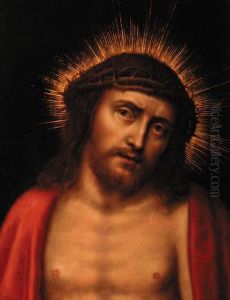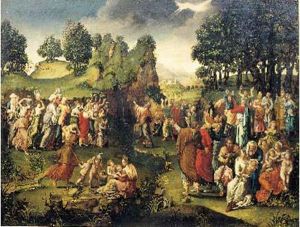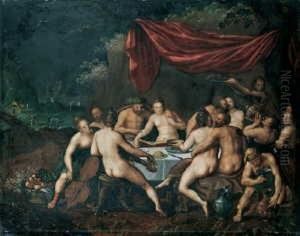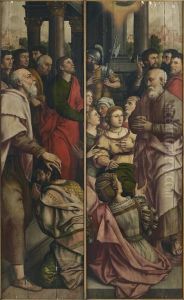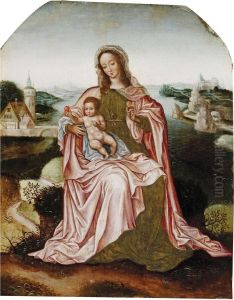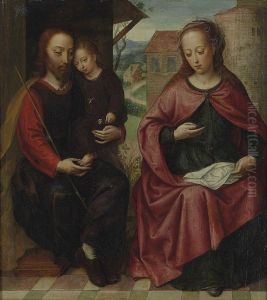Pieter Ii Claeissins Paintings
Pieter II Claeissins, born around 1606, was a Flemish painter who hailed from a prominent family of artists in Bruges. His lineage included several notable painters, which suggests that he was part of a dynasty that had a significant impact on the artistic landscape of his time. The Claeissins family played a crucial role in the development of art in Bruges, especially during a period when the city was experiencing both cultural and economic transitions.
Pieter II Claeissins' career is less documented compared to other artists of his era, but it is known that his work continued the family tradition of excellence in painting. He specialized in religious themes, as well as portraits and historical subjects, which were popular among the patrons of his time. His style was deeply influenced by the Flemish Baroque tradition, which was characterized by dramatic expressions, rich coloration, and intricate details. However, little is known about his specific contributions or standout works, mainly because many artworks from this period were not always well-documented or have been lost or attributed to other artists over time.
Despite the lack of specific information on his oeuvre, Pieter II Claeissins is considered an important figure in the continuation of the Claeissins family legacy in art. The family's prominence in Bruges' artistic circles is well acknowledged, and Pieter II's role in this dynasty helps to highlight the collective contribution of the Claeissins to Flemish art. His life and work reflect the broader trends of his time, showcasing the blend of religious and secular themes that were prevalent in the art of the Flemish Baroque period.
Pieter II Claeissins' death is believed to have occurred around 1679, marking the end of an era for the Claeissins family's direct involvement in the artistic developments of Bruges. However, the legacy of the family, and of Pieter II in particular, continues to be studied by art historians and appreciated by art lovers, offering insights into the rich tapestry of Flemish art and the intricate networks of artists' families in the Baroque era.
